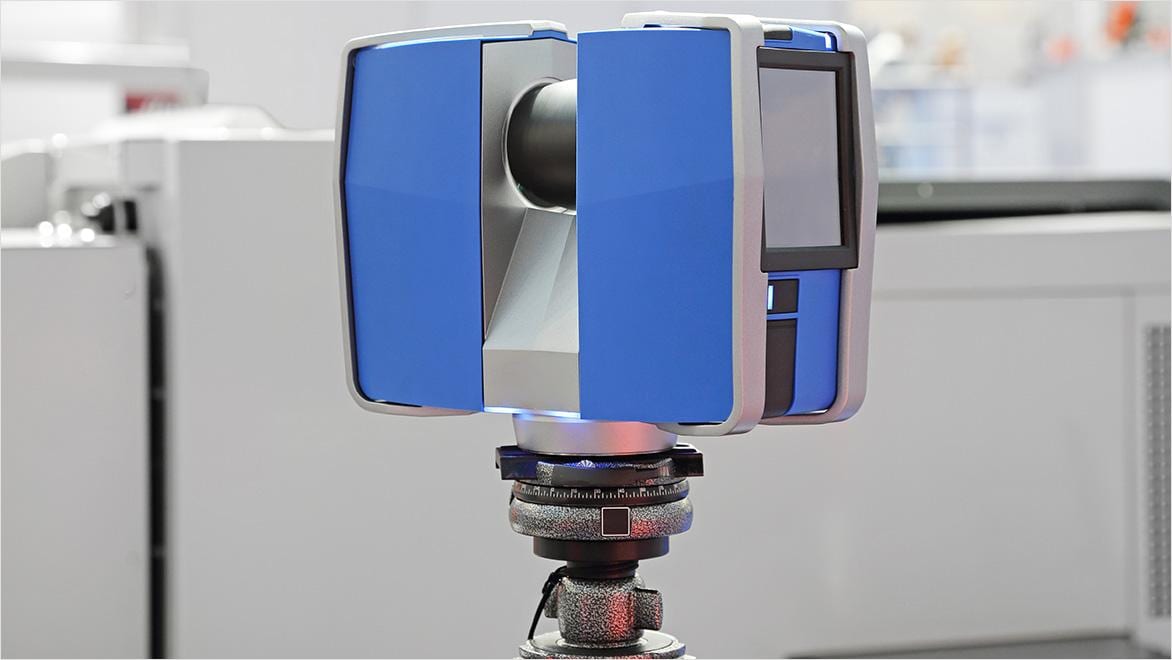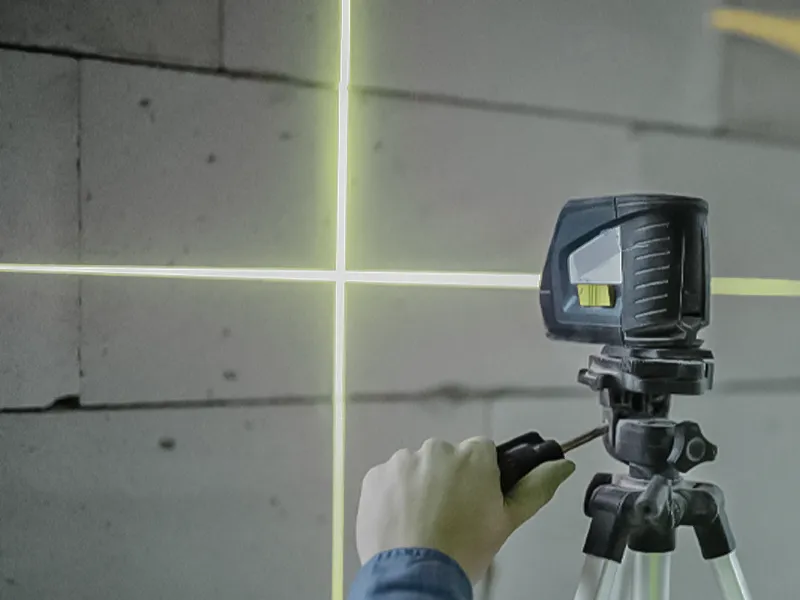How 3D Scanning Improves Green Construction Practices
Exactly How 3D Laser Scanning Transforms Architectural Design and Construction Projects
3D laser scanning is changing the landscape of building design and building. This technology provides unparalleled precision in recording existing atmospheres, which facilitates much better task planning and execution. It minimizes errors while enhancing efficiency in different phases of development. The ramifications for cooperation among designers, engineers, and other stakeholders are substantial. These advancements unlock to brand-new style opportunities and cutting-edge solutions. What lies in advance for this progressing modern technology?
The Principles of 3D Laser Scanning Modern Technology
Although 3D laser scanning innovation might seem complicated, its core principles are transformative and straightforward for architectural style. This innovation employs laser beams to capture specific measurements of physical structures, producing a comprehensive point cloud that represents the scanned environment. A laser scanner releases fast pulses of light, measuring the time it considers the light to return, which permits the estimation of distances with amazing accuracy.
The resulting factor cloud can be exchanged a 3D model, giving engineers with vital visual data. This version allows experts to analyze and adjust design components within their jobs, enabling cutting-edge options and enhanced visualization. By using 3D laser scanning, designers can better recognize the status quo of a site, making certain that brand-new designs integrate with their environments. This combination of technology right into architectural layout notes a substantial improvement, promoting creativity and accuracy in the area.

Enhancing Accuracy and Efficiency in Architectural Projects
As architectural jobs significantly require accuracy and speed, 3D laser scanning arises as a crucial device in boosting both precision and performance. This modern technology records numerous information factors in a short duration, producing accurate and in-depth 3D designs of existing structures. The ability to acquire accurate dimensions minimizes the danger of errors during the layout stage, enabling architects to visualize their projects with unrivaled clarity.
The fast data collection procedure lessens the time spent on-site, enabling groups to concentrate on analysis and layout enhancements. With real-time information accessibility, adjustments can be made promptly, promoting a more structured workflow. The assimilation of 3D laser scanning right into architectural techniques not only enhances measurement precision however also improves the overall task timeline, helping with quicker decision-making. In a sector where precision is crucial, this innovation stands as a transformative force, raising the criteria of building style and building projects.
Improving Collaboration Amongst Stakeholders
While standard architectural procedures commonly involve fragmented communication amongst stakeholders, 3D laser scanning fosters an extra cohesive collective setting. By offering specific, high-resolution data, this innovation permits architects, designers, professionals, and customers to run from a unified factor of reference. The comprehensive visualizations produced via laser scanning get rid of false impressions and ambiguities, making certain that all parties have access to the exact same details.
This transparency improves decision-making and encourages prompt responses, as stakeholders can easily imagine style aspects and spatial relationships. Furthermore, the check integration of 3D scanning data into Building Info Modeling (BIM) platforms further simplifies partnership, enabling real-time updates and alterations. Such smooth interaction not just minimizes conflicts yet likewise speeds up job timelines, as all stakeholders stay lined up throughout the layout and building and construction stages. Eventually, 3D laser scanning changes standard workflows into a more reliable and joint process, profiting all events involved.
Opening Innovative Possibilities in Style
By allowing architects to visualize intricate spatial partnerships and complex details, 3D laser scanning discloses imaginative possibilities in layout. This innovation allows for precise mapping of existing settings, allowing architects to check out innovative ideas that might have formerly seemed not practical. With extremely precise data, developers can trying out unconventional kinds and products, pushing the borders of standard architecture.
The integration of 3D laser scanning into the layout process fosters collaboration among multidisciplinary groups, motivating the exchange of concepts and enhancing creativity. The in-depth visualizations created by this innovation not just aid in identifying prospective layout challenges however also motivate services that may not have actually been considered. Because of this, designers can produce extra dynamic and appealing spaces that resonate with users while fulfilling functional demands. Inevitably, 3D laser scanning changes the building landscape, equipping designers to recognize their visions with extraordinary accuracy and creativity.
The Future of 3D Laser Scanning in Architecture and Construction
The combination of 3D laser scanning right into building layout not just improves imagination yet also establishes the phase for its developing function in the future of design and building. As innovation advances, the precision and performance of laser scanning will certainly proceed to enhance, enabling contractors and designers to produce a lot more complicated styles with precision - 3D Scanning. Using this innovation in real-time data collection will facilitate better decision-making, reducing errors and streamlining workflows
Future applications might consist of augmented and virtual truth combinations, allowing stakeholders to envision jobs in immersive atmospheres. Additionally, as sustainability comes to be a top priority, 3D laser scanning will support the development of energy-efficient layouts by supplying comprehensive insights right into existing structures. As partnership among numerous self-controls becomes even more necessary, the capability to share exact 3D designs will foster technology and improve project results. Ultimately, 3D laser scanning will certainly redefine standards in building design and building and construction techniques.
Often Asked Inquiries
What Is the Cost of Carrying Out 3D Laser Scanning Technology?

How much time Does a Typical 3D Laser Scanning Project Take?
A typical 3D laser scanning project can take anywhere from a couple of hours to numerous days, relying on aspects such as the job's size, complexity, and the degree of information required for accurate data capture.
What Sorts Of Projects Advantage The Majority Of From 3D Laser Scanning?
3D laser scanning advantages different projects, especially large constructions, historical remediations, and complex renovations. It boosts accuracy in measurements, decreases mistakes, and supplies detailed information crucial for effective planning and implementation in architectural style and construction.

Exist Specific Software Application Programs Required for 3D Laser Scans?
Yes, details software application are important for refining 3D laser scans. 3D Scanning. Popular alternatives consist of Autodesk ReCap, Faro Scene, and Leica Cyclone, each offering distinct functions customized for visualizing and evaluating scanned data effectively in various projects
How Does 3D Laser Scanning Influence Environmental Sustainability in Building?
3D laser scanning enhances environmental sustainability in construction by minimizing material waste, making it possible for specific dimensions, and promoting efficient resource usage. This modern technology permits much better planning, reducing the ecological impact of building jobs through improved precision and effectiveness.
3D laser scanning is check my blog transforming the landscape of architectural layout and building. 3D laser scanning innovation may seem facility, its core concepts are simple and transformative for architectural layout. By making it possible for engineers to imagine complex complex details and spatial partnerships, look at here 3D laser scanning exposes creative opportunities in style. The assimilation of 3D laser scanning into the layout procedure fosters cooperation among multidisciplinary groups, motivating the exchange of concepts and improving creative thinking. The combination of 3D laser scanning right into architectural layout not only boosts imagination yet likewise establishes the stage for its advancing role in the future of style and construction.